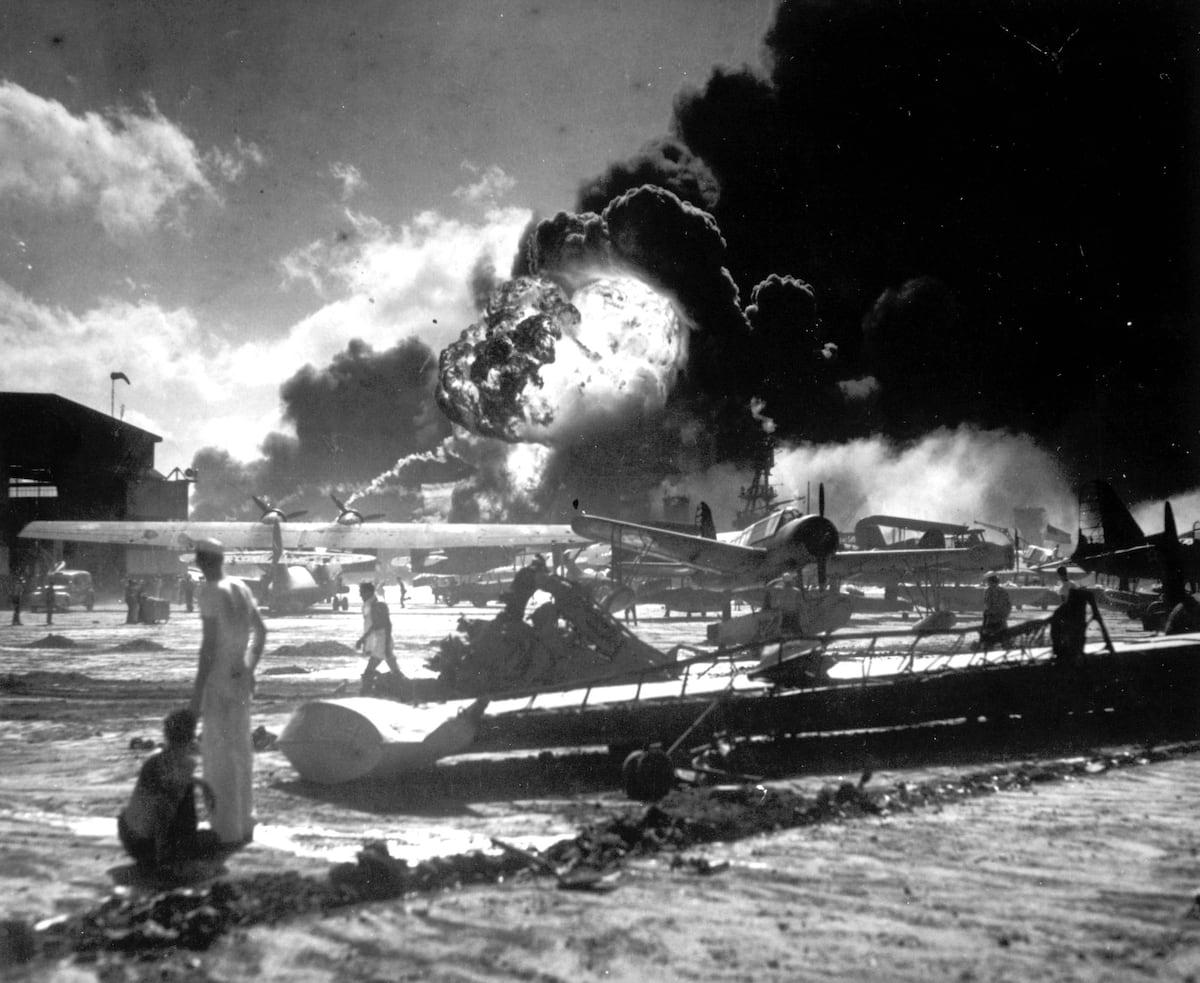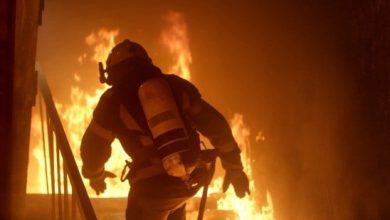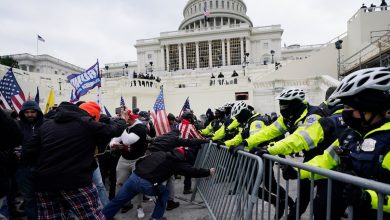The Japanese attack on Pearl Harbor achieved as nearly complete a surprise on an opponent as any in military history. Ever since the first bombs fell along Battleship Row on Dec. 7, 1941, historians have pondered how that could be.
Explanations have run the gamut from the incompetence of the U.S. military commanders in Honolulu to racial hubris and on up to conspiracy among the Roosevelt administration’s innermost circle. The real answer, however, is far more reasonable.
Simply put, Admiral Husband Kimmel was caught with his pants down that day, not only because of shortcomings in U.S. radio intelligence, but also because an elaborate scheme of radio denial and deception developed by the Imperial Japanese Navy’s general staff and its Combined Fleet blinded Washington to Tokyo’s intentions to precipitate conflict.
With a great deal of foresight and planning, the imperial navy’s leadership had enacted a synchronized strategy for the attack on Pearl Harbor that combined radio silence, active radio deception and its own effective radio intelligence to be assured that the Americans remained in the dark throughout the final moments of peace.
RELATED
For two decades before 1941, the bulk of Japan’s navy typically took a defensive posture in any fleet exercises simulating a conflict with the United States and its Pacific Fleet, while allowing other smaller naval forces to attack targets elsewhere in the Pacific—usually to the south.
During the 1930s, as the navy expanded and modernized its aircraft carrier arm, its major exercises continued to feature that defensive doctrine while its commanders visualized a decisive battle against the Americans occurring farther east, near the Mariana Islands.
U.S. naval intelligence was aware of Japan’s defensive outlook and had come to accept it as absolute. The Americans believed wholeheartedly that in any future conflict the majority of Emperor Hirohito’s naval forces would choose to remain in home waters rather than run the risk of leaving Japan undefended.
In January 1941, however, Admiral Isoroku Yamamoto proposed that the decades-old strategy be scrapped in favor of one calling for a first strike on the U.S. Pacific Fleet. It was not a completely new idea, having been considered with some regularity by the popular press and war college students. What made it different was that this time the idea was coming from a senior member of the naval establishment. Someone of Yamamoto’s stature could not be ignored.
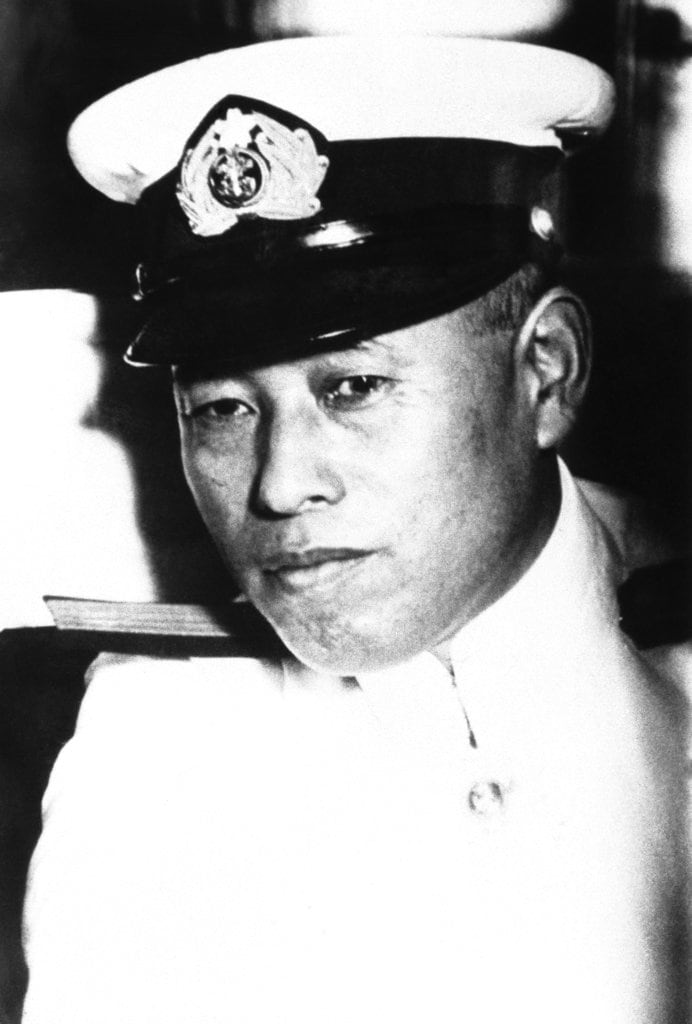
Initially Yamamoto was rebuffed, but by the late summer of 1941 he was able to bring the navy’s general staff around to his way of thinking.
Among the changes resulting from this new direction was the organization of Japan’s carriers into a single unit. For more than a decade, the carriers had been arranged into divisions comprising two flattops and their escorts. In maneuvers, those divisions were parceled out to the various fleets to serve as escorts or scouts. Under Yamamoto’s direction, however, in April 1941 all eight of the emperor’s carriers would serve together.
This gave the Combined Fleet a permanent mobile air force of nearly 500 planes. The 1st Air Fleet was a radical departure from naval practice at that time, and was well beyond anything being considered by either the American or Royal navies.
As radical a change as it was, however, U.S. naval intelligence failed to notice. It intercepted a reference to the “1st AF” in November 1941 but was unable to discern what that meant. All intelligence officers could conclude was that the 1st AF “seemed to be in a high position” in the Japanese naval aviation hierarchy.
Yamamoto was too experienced to believe that such oversight would last for long and, as part of his new strategy, pushed for a denial-and-deception effort that would keep the change shrouded in mystery.
Communications security had been a major concern of the imperial navy as far back as the Russo-Japanese War, and it held the American and British radio intelligence offices in particularly high regard. It was for this reason that communication security was a feature of every navy exercise throughout the interwar period.
By late 1941, however, American and British radio intelligence had mixed capabilities. The countries’ code-breakers had been able to recover only about 10 percent of the code groups of the latest version of the main Japanese naval operational code, and intercepted messages often could not be understood in full. That meant the majority of American efforts were focused on direction finding (D/F) and traffic analysis — i.e., the scrutiny of Japanese naval communications, less the messages.
American ability in this area was good but subject to limitations. While one monitoring station in Cavite, Philippines, known as “Cast,” could take single-line bearings on Japanese ships and stations, the rest of the direction-finding effort was not, according to Navy cryptologist Lt. Cmdr. Joseph John Rochefort, “as efficient or productive of results as it might have been.”
The stations lacked men and equipment, and the long distances involved (more than 2,000 miles) rendered most results difficult to act upon.
U.S. traffic analysis was totally dependent on the level of Tokyo’s communications. Even then, Rochefort’s fleet communications unit in Hawaii, called “Hypo,” sometimes differed with Cavite’s analysis.
Both radio intelligence units reported their findings on a nearly daily basis — Cast’s reports were known as TESTM, while Hypo produced what was called H Chronology. The often-conflicting reports were routinely sent to Kimmel in Pearl Harbor as well as to the Office of Naval Intelligence in Washington, D.C.
To further muddy the waters, Kimmel’s fleet intelligence officer, Commander Edwin Layton, would compose his own daily Communications Intelligence (COMINT) summary, which was largely a synthesis of the Cast and Hypo reports.
A complete lack of human intelligence sources meant that the Americans had no way to supplement, replace or verify the conflicting reports. The almost total reliance on intercepted radio traffic meant that all the Japanese had to do to give the Americans the slip was add new levels of security to their naval communications system.
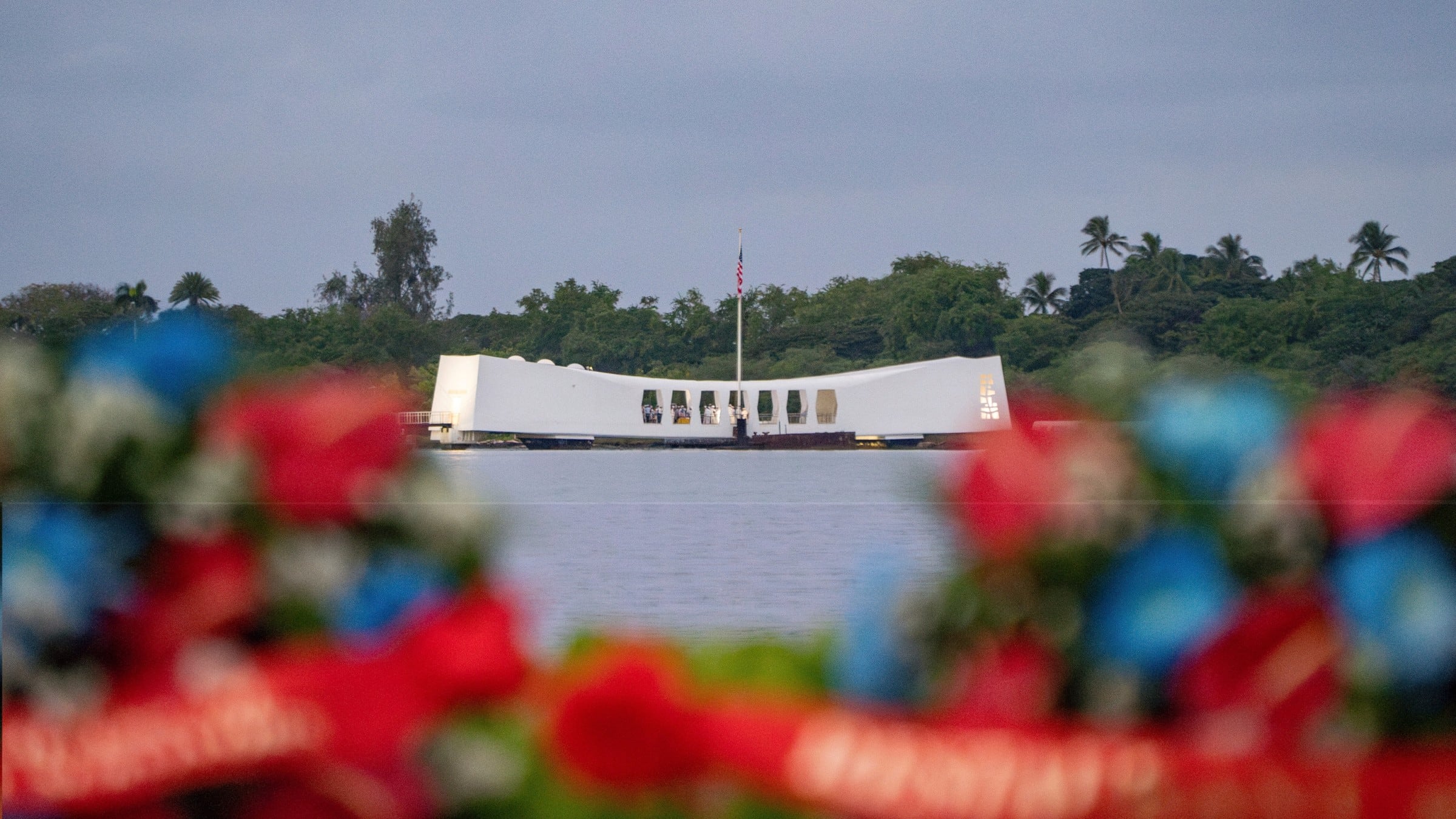
The first step was to initiate the new fleet signal system HY009 (kana-kanak-number), which was put into effect on Nov. 1, 1941. More important, five days later the imperial navy changed the way it addressed radio traffic.
Previously, messages were addressed openly to the recipient, usually with the latter’s call sign in the message transmission. The new system, however, replaced those calls with single general or collective call signs that equated to groupings such as “all ships and stations” or “all fleet elements.” The specific addresses themselves were buried in the encrypted part of the message. This simple change nearly crippled American analysis of Japanese naval messages.
The Japanese Strike Force also received supplementary instructions for its communications. Representatives from the naval general staff, 1st AF, Combined Fleet, 11th Air Fleet and other high-ranking officials were probably briefed at a conference on fleet communications in Tokyo on Oct. 27, 1941. Although records of the conference are mostly missing, we can reconstruct the major elements of the deception plan that was discussed.
The first part of the plan was to forbid communication from the Strike Force’s ships. Vice Admiral Chuichi Nagumo, commander of the Hawaiian Operation (as the Pearl Harbor attack was named), controlled his communications within the stipulations of Yamamoto’s “Secret Order Number One,” which took effect for the Strike Force on November 5.
Nagumo emphasized to the ship’s captains that “all transmissions [among Strike Force vessels] are strictly forbidden,” and to ensure that his orders were followed, he had transmitters on all of his ships disabled, secured or removed entirely.
While the ships were silent, however, it was still necessary to supply them with up-to-date intelligence, weather and orders. The naval general staff accomplished this by setting up a radio broadcast system that stressed redundant transmission schedules and multiple frequencies. The broadcast was a one-way method of transmitting messages. The recipient — in this case, the Strike Force — did not acknowledge receipt of the messages, which were simply repeated to ensure that they were received.
To further assure reception of all necessary traffic, Nagumo required every ship to monitor the broadcast. Certain vessels, such as the battleships Hiei and Kirishima, were tasked with copying every message. These were then relayed to the other ships by either semaphore flags or narrow-beam signal lamps.
The Japanese knew, however, that if the ships assigned to the Strike Force suddenly went silent it could alert the Americans. Some sort of radio traffic had to be maintained. Their solution to this problem was simple but effective.
During a Tokyo-directed communications drill that ran from Nov. 8 to 13, Hiei, the carrier Akagi and the destroyers of the 24th Division were instructed to contact Tokyo three times a day on set frequencies. Two days later, new pages of drill call signs were issued to the entire fleet — except for the stations and operators imitating the ships of the Strike Force, which continued to use the old signs.

To ensure the authenticity of the old signs, the radio operators from the capital ships of the Strike Force were sent to shore at the Kure, Sasebo and Yokosuka naval bases to deliver this traffic.
These operators, whose familiar “fists” were easily identified by the Americans, were critical to the deception. The Americans would connect the known fists of the operators with direction finding on the call signs of ships such as Akagi and believe that the carriers and other ships were still in Japanese waters.
In addition, as the carriers departed the Inland Sea, aircraft from the 12th Combined Air Group arrived at the newly vacated bases. Their role in the deception was to keep up air activity and associated radio traffic with the carriers and bases as though they were just continuing the earlier training.
The final part of the plan was a radio-monitoring effort to ensure that the Americans remained unaware of the approaching threat. Tokyo tasked its radio-monitoring units with listening to American communications being sent from Pearl Harbor to confirm that their ploy was working.
The main station responsible for that was the 6th Communications Unit at Kwajalein Atoll in the Marshall Islands. The unit copied communications from the U.S. command and ships at Pearl Harbor, paying special attention to the communications of Navy and Army patrol flights taking off from the base. Through analysis of this intercepted traffic, the Japanese were able to confirm that most of those flights were staying to the south of the island.
In the two weeks preceding its redeployment to the Kuriles, the ships and planes of the Strike Force were busy with last-minute training, supply and planning for the attack. The misleading shore-based radio traffic began on Nov. 8 and continued through the 13th. All the while, ships of the force began to rendezvous at Saeki Wan in the Oita Prefecture on northeast Kyushu.
The Americans, who were monitoring the drill, correctly reported Akagi at Sasebo in the Nov. 10 Pacific Fleet Communications Summary. Two days later, the site at Cavite reported a D/F bearing that placed Yamamoto’s flagship, the battleship Nagato, near Kure, which was very close to its actual location.
On Nov. 14, Cavite located Akagi near Sasebo. The carrier, however, had left the previous day for Kagoshima, more than 300 miles to the southeast. Meanwhile, the Pacific Fleet Communications Intelligence Summary stated that the carriers were “relatively inactive” and “in home waters” from Nov. 13 to 15, which was true.
For the next two days, all of the ships of the Strike Force assembled at Saeki Wan (Bay) or at the port of Beppu on the northeast shore of Kyushu. Only Hiei was absent. It was steaming to Yokosuka to pick up an officer from the naval general staff with detailed intelligence on Pearl Harbor. The Pacific Fleet summaries noted that the carriers were either in Kure or Sasebo, or in the area of Kyushu.
In the late afternoon of Nov. 17, after Admiral Yamamoto’s final conference with the commanders and staff of the Strike Force, the carriers Hiryu and Soryu, along with their escorts, slipped out of Saeki Wan, headed southeast out of the Bungo Strait past Okino Shima Island and then turned northeast toward Hitokappu Wan in the Kuriles. The rest of the force followed in groups of two or four ships.
For the next few days, U.S. naval radio intelligence seemed uncertain about the activity of the carriers and their escorts.
The Nov. 16 Pacific Fleet COMINT summary placed unspecified carrier divisions in the Mandates (Marshall Islands) with the 1st Destroyer Division. The summary of Nov. 18 put other carrier divisions with the 3rd Battleship Division and the 2nd Destroyer Squadron. The same summary indicated, with reservations, that the 4th Carrier Division — Shokaku (call sign SITI4) and Zuikaku — was near Jaluit Island in the Marshalls. Cavite disagreed with this analysis.
After the Strike Force left, the imperial navy sent out orders for another communications drill to begin on Nov. 22, while an air defense drill involving the Sasebo-based 11th Air Fleet started as well. Three days earlier the carriers, battleships and destroyers of the force were ordered to maintain radio watch on high and low frequencies for specific types of “battle” and “alert” messages.
By this time, it was becoming clear to the Japanese that their deception efforts had borne fruit. The Nov. 19 COMINT summary noted that Hiei “appears today at Sasebo.” In reality, the ship was in Yokosuka on the east coast of Honshu, some several hundred miles to the northeast of Sasebo.
From Nov. 20 to 23, Nagumo’s ships rendezvoused in the Kuriles anchorage. There they received the detailed intelligence from Tokyo, and Commander Minoru Genda put the aerial squadrons through flight and tactical training sessions.
On Nov. 22, Cavite took a D/F bearing on Akagi of 28 degrees, which placed it in Sasebo. The station also took a bearing on the fleet call sign of the 1st Air Fleet commander in chief placing him in Yokosuka. The next day, Cavite reported a bearing of 30 degrees on Zuikaku, which put it in Kure. According to that day’s COMINT summary, the carriers were “relatively quiet.”
On the 24th, Cavite took another D/F bearing of 28 degrees on Akagi and now asserted that it was in Kure — this despite the fact that the station had placed the same carrier in Sasebo two days earlier.
Nevertheless, it was still in “Empire waters,” which seemed to be good enough for the Americans. The intelligence summary went so far as to establish that it had minimal information on the carriers’ whereabouts. For some reason, the summary went on to indicate that one or more carrier divisions were in the Mandates.
The next day, the U.S. Office of Naval Intelligence released its weekly intelligence summary that placed all Japanese carriers in either Sasebo or Kure.
On that day, Tokyo broadcast Yamamoto’s Combined Fleet Operational Order No. 5 instructing the Strike Force to depart with the “utmost secrecy” on the following day and advance to its standby point northwest of Hawaii by the evening of Dec. 3. At 0600 hours the next day, the Strike Force raised anchors and sailed into the northern Pacific.
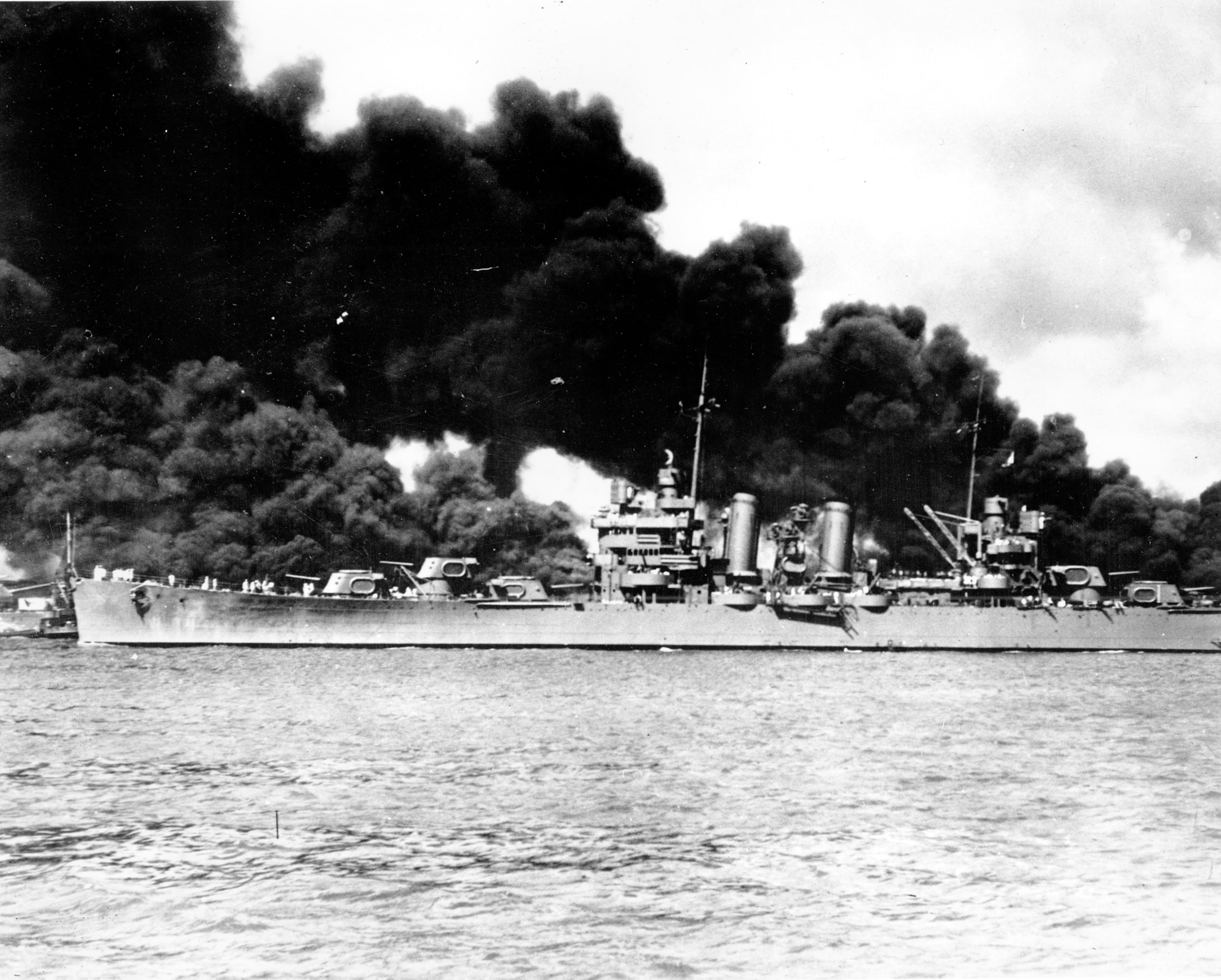
U.S. radio intelligence reports illustrate the continued effectiveness of the Japanese deception measures. The commander of the 16th Naval District (Philippine Islands) noted on Nov. 25 that he could not support Hawaii’s belief that Japanese carriers were in the Mandates. His message added, however, that “our best indications are that all known 1st and 2nd Fleet carriers are still in the Kure-Sasebo area.”
Meanwhile, Rochefort’s Fleet Intelligence Unit in Hawaii reported that Kirishima was in Yokosuka and that several carriers, including those of Division 4, were near Sasebo. The unit added that Japanese carriers had been heard on a tactical frequency using their drill call signs, which indicated they were still in home waters.
Perhaps the most critical deceptive transmissions were reported on the last day of the month. Cavite heard Akagi and an unidentified Maru on a bearing of 27 degrees, seemingly putting the carrier near Sasebo. Those calls had been received from the same tactical frequency five days earlier. To Rochefort, it confirmed that some sort of exercises or maneuvers were underway.
On Dec. 1, the imperial navy changed its service (or fleet) call-sign system, leading both Rochefort and Layton to conclude that Tokyo was preparing for “active operations on a large scale.” However, no one could find any evidence of a Japanese move against Hawaii, only signs of naval movement to the south.
Layton, in his report for the day placed four carriers near Formosa and one in the Mandates. When pressed by Kimmel about the others, he said he believed they were in the Kure area refitting from previous deployments.
For the next six days, the U.S. Pacific Fleet command and the respective radio intelligence centers continued to maintain that the principal Japanese flattops were in home waters near Sasebo, Kure or in the Kyushu area and that a few light or auxiliary carriers had deployed to Formosa or the Mandates.
They continued to believe this right up to the last moment. In fact, just as the first wave of Japanese aircraft appeared over Oahu, Cavite reported that Akagi was in the Nansei Islands, south of Kyushu.
The surprise was complete, the destruction almost total.
This story was originally published in the December 2006 issue of World War II magazine and first appeared online on HistoryNet.com.
Read the full article here

